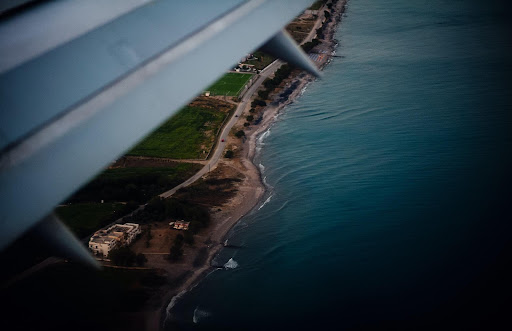5 minute read
Kos is five times smaller than nearby Rhodes and 28 times smaller than Crete. Is it worthwhile to visit Kos? Certainly, if you enjoy Greek islets and are looking for a fresh adventure. There is a lot to see in Hippocrates’ home both before and after a sea swim. A change of activity is provided by boat excursions to the nearby islands of Nisyros and Kardamena or to the Turkish coast. Continue reading to make your Kos travel plans.
In the Aegean Sea, Kos is a paradise. Kos, a Greek island, has recently gained a lot of popularity among families with kids who prefer a comfortable and relaxing holiday at sea. When selecting a vacation property in Kos, Greece, its sand and pebble beaches, the island’s lush vegetation, the historical sites and castles, modern Kos and its hotel facilities, are a huge benefit.
Kos can be reached primarily in one of two ways: by boat or by plane. By aircraft is quicker and more practical. Hippocrates Airport, also known as Kos Airport, is situated next to the hamlet of Andimahia, 23 kilometres west of Kos City. Kos airport transfers are the most convenient method to travel from Greece’s Kos Airport to your destination. It is advised that you reserve your airport transfer online, ideally at a reasonable and trustworthy website of airport transfer service. You won’t have to deal with local cabbies or waste time on public transportation once you arrive if you book an AtoB Kos airport taxi in advance.
Haggi Hassan Mosque
On the archipelago, several civilizations converged. Each has been represented and is still present in traces. The diversity of churches, mosques, and castles on the island makes it very fascinating. The mosque is located where an old cleansing stream once stood. The shrine still has its basic look. Visitors used to book an airport taxi and come to its ramparts to familiarise themselves with diversity. The shrine has souvenirs for sale. Dim lights are turned on in the Haji Hassan structure after nightfall. In the dead of night, lovers frequently stroll by the shrine.
Asklepion
The biggest of all the Greek Asklepios temples, it is regarded as Kos’s primary draw. The patron saint of medicine, Asclepius (Aesculapius), was honoured with a dedication. It was committed to helping him and healing the locals. The physicians were also pastors at the same time. The building was completed in the fourth century B.C. According to legend, Hippocrates himself – the “father of medicine” – honed his abilities here.
German archaeologist Rudolf Herzog discovered the Asklepios of Kos during digs in 1901, when German archaeologist Rudolf Herzog chose to investigate the spot close to the revered spruce woodland on the island of Kos. It is situated in a lovely area of the island, which can be easily reachable by airport transfer, and provides a stunning view of the water.
Temple of Apollo (Kardamen)
Alasarna is the name of the magnificent structure in prehistoric times. Scientists were persuaded that life on Kos predated the late ancient era when they discovered the temple’s base beneath a structure from the early Christian era. Alasarna was a centre of religion, and this didn’t alter even after the city of Kos, which first appeared in 336 BC. Only a tiny portion of the sanctuary remains today. If you take the AtoB Kos airport taxi and go here, you’ll see three newly found structures, which are one-of-a-kind examples of the island’s culture and art, are the shrine of Apollo, the altar or sloping entryway (according to scientists), and the temple.
Aspris Petras
“White stone” is what Aspris Petras signifies. The tunnel could be between 100 and 140 million years old. Italian researchers made the discovery of the natural draw in 1922. The cave was initially used for worship, but later inhabitants discovered that the tunnel’s geological characteristics allowed for human habitation.
Prehistoric times are when Aspris Petras’ earliest discoveries were made. Ancient human bones and different vessels have been discovered by researchers. One of the uncommon discoveries is a weapon made of blades and polished pieces of obsidian, a volcanic stone found on the island of Yali. Additionally, food remnants have been discovered here, supporting the theory that the island was inhabited by groups that grazed animals. The existence of pits containing oval millstones makes the tunnel intriguing as well. When you are on the island of Kos, you simply have to come here using the Kos airport transfer and visit one of the oldest monuments, Aspriss Petras.
Ruins of an ancient city
The old city’s remains can be found close to Kos’s port. It’s very useful to come here from any point on the island by airport taxi. The Great Stoa (Kamara tou fora), portions of the Ancient Agora from the IV–III centuries BC, and other minor arcades with shrines to Dionysus, Aphrodite, and Hercules can all be found here. The third-century BC Odeon has been well-preserved and has 12 tribunes and vaulted halls.
Additionally interesting is Kos itself as a city. Right in front of the sanctuary of Hagia Anna is the Ancient Stadium, which dates to the first part of the second century BC. Tourists first encounter Nerandzi Castle in the harbour. This structure was once the most significant and was also maintained better than other defences.





